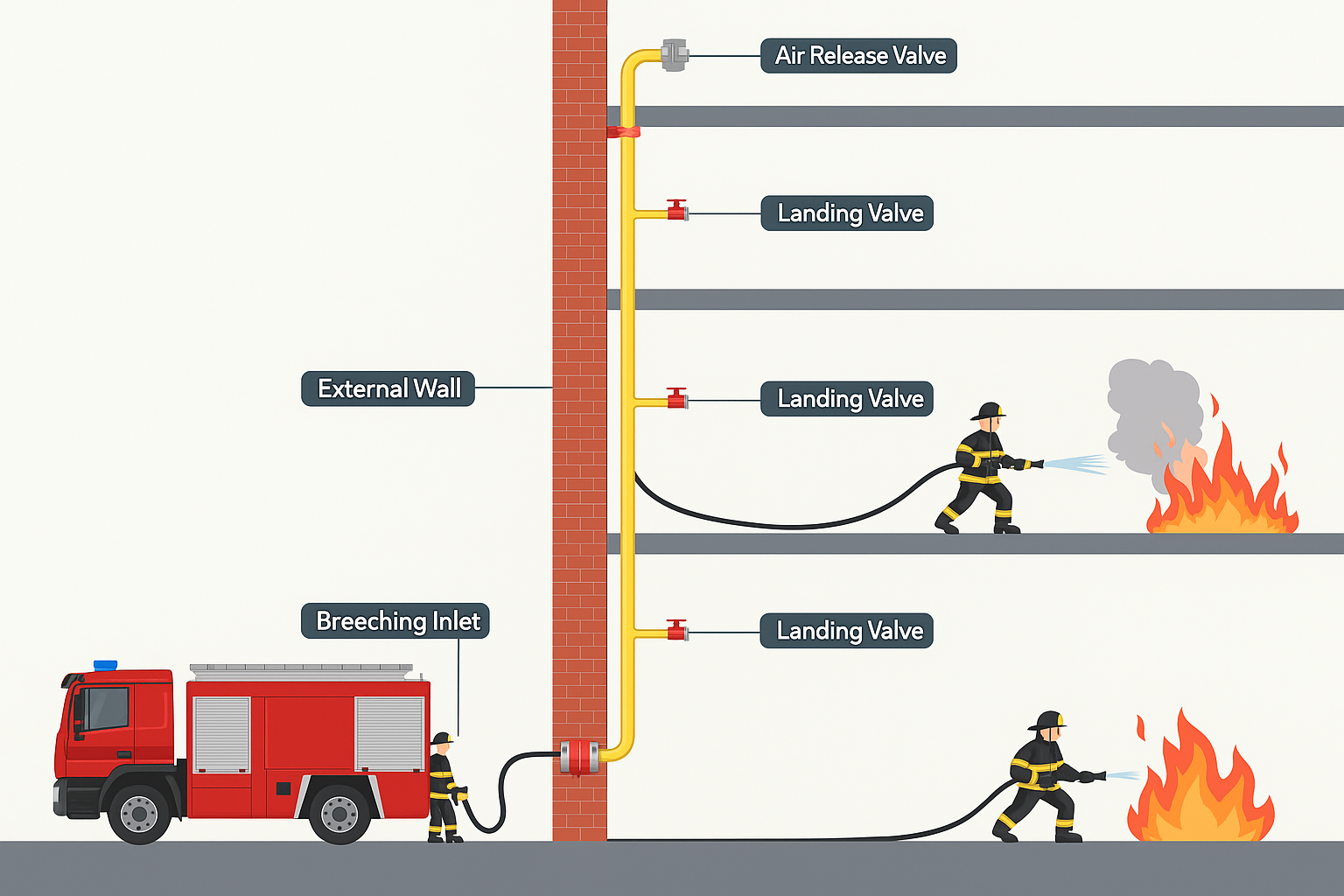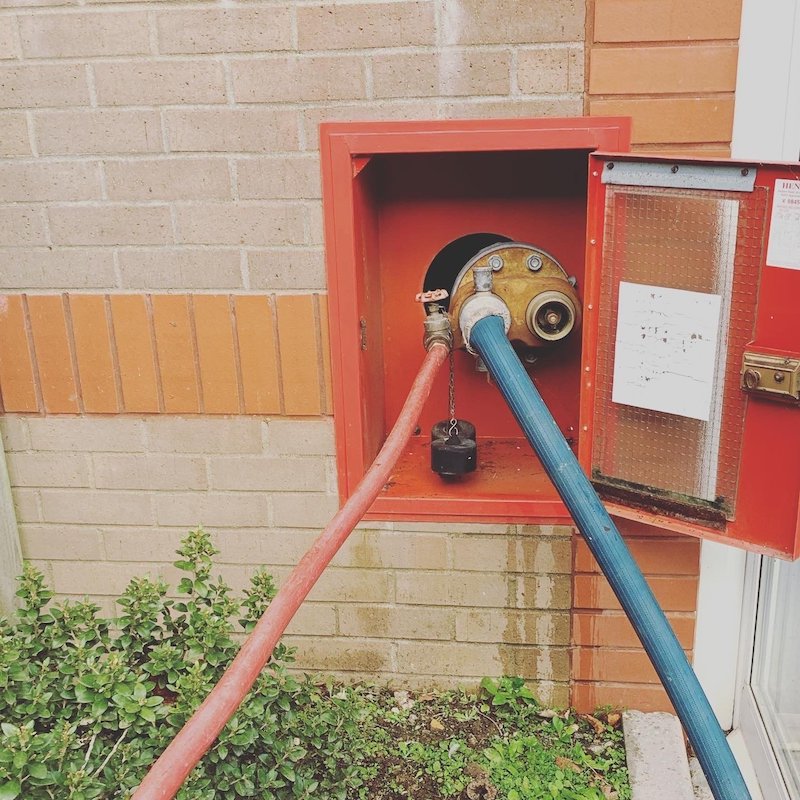Table of Contents
What is a Dry Riser?
A Dry Riser is a system of specialist pipework designed to give firefighters rapid access to water on all floors during a fire emergency. Dry Riser systems are designed to only contain water when under testing or during a real emergency.
How Does A Dry Riser Work?
Vertical pipework is installed across every level of the building, starting with an inlet on the ground floor. This is where the fire service would attach their engine and pressurised water supply.
Each subsequent floor in the property has its own landing valve. This allows the fire service to then connect a hose to the valve on the appropriate hose to tackle the fire.
A Dry Riser system does not contain water unless directly coupled up to a water supply. The system also contains an air release valve which controls the pressure within the pipework to ensure a strong and consistent flow of water.

When are Dry Risers Required?
Dry Riser systems are only required in buildings of a certain height. If the height of the building from the fire brigade access point to the top floor exceeds 18 metres, but is below 50 metres, then the building must have a dry riser.
This is also true if the building has floors that are more than 10 metres below ground level. Therefore, dry risers are commonly found in high-rise residential buildings, hotels, hospitals and shopping centres.
What are the Legal Requirements for Dry Risers?
All Dry Riser systems must be designed, installed and tested to meet BS Standard BS 9990:2015 BS9991, BS9999 and Approved Document B (Fire Safety) of the Building Regulations (England & Wales).
It is also the legal responsibility of the building’s Responsible Person (Owner, Landlord, Facilities Manager) to prove that the system has been certified correctly to these standards. If they cannot do so, it may lead to null and void insurance in the event of a fire.
To stay compliant, Dry Riser systems must be visually inspected every 6 months, and hydraulic pressure tested annually or following a fire. All tests must be undertaken by a competent person.

What are the Benefits of a Dry Riser?
There are several benefits to Dry Riser systems. The main advantage being that it saves firefighters valuable time to tackle fires in high rise buildings. Rather than having to fight to run a hose up several floors in a multi-storey building, which may give the fire time to spread to other floors, Dry Riser systems allow fire fighters to go directly to the right floor and gain access to pressurised water quickly.
What is the Difference Between a Wet Riser and Dry Riser?
The main difference between a Wet Riser and Dry Riser is that a wet riser is constantly full of water. This is generally sourced from the mains and a pump room located within the building, providing a constant access to a water supply if required.
Due to these additional needs, a Wet Riser is usually more expensive than a Dry Riser system.
Wet Riser systems are usually found in taller buildings as the immediate availability of water allows for more efficient firefighting.
How Can Cannon Help You?
Cannon Fire Safety Limited are third-party accredited under IFCC 3915 for the design, install and maintenance of Dry Riser systems.
Our team of experts work with you to ensure that your installations
If you have a new project which requires a Dry Riser, get in touch with our team to discuss your needs and how we can help protect your property.

Request A Quote
Have a project or portfolio that you would like to work with us on? Get in touch and a member of our team will be in touch very shortly..
Our two head offices are based in Birmingham and Ollerton with fully qualified, experienced engineers spread throughout the UK allowing Cannon Fire to operate nationwide.
Call Us: 01623 860685
Email Us: [email protected]
CONTACT DETAILS
Trading Offices
Unit 1 Sherwood Network Centre, Ollerton, NG22 9FD
Unit C, 37a Parkfield Road, Coleshill,
Birmingham, B46 3LD
OUR KEY SERVICES
Copyright © Cannon 2024 All rights Reserved